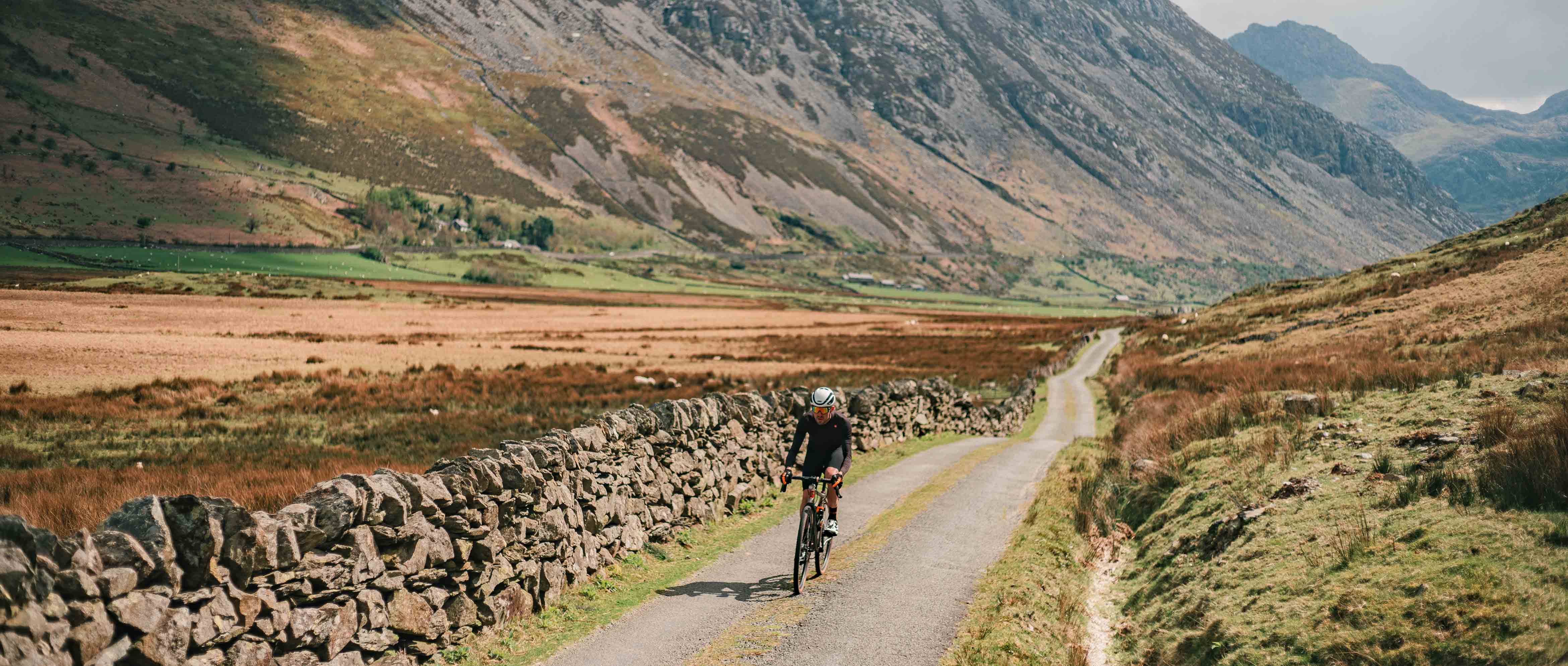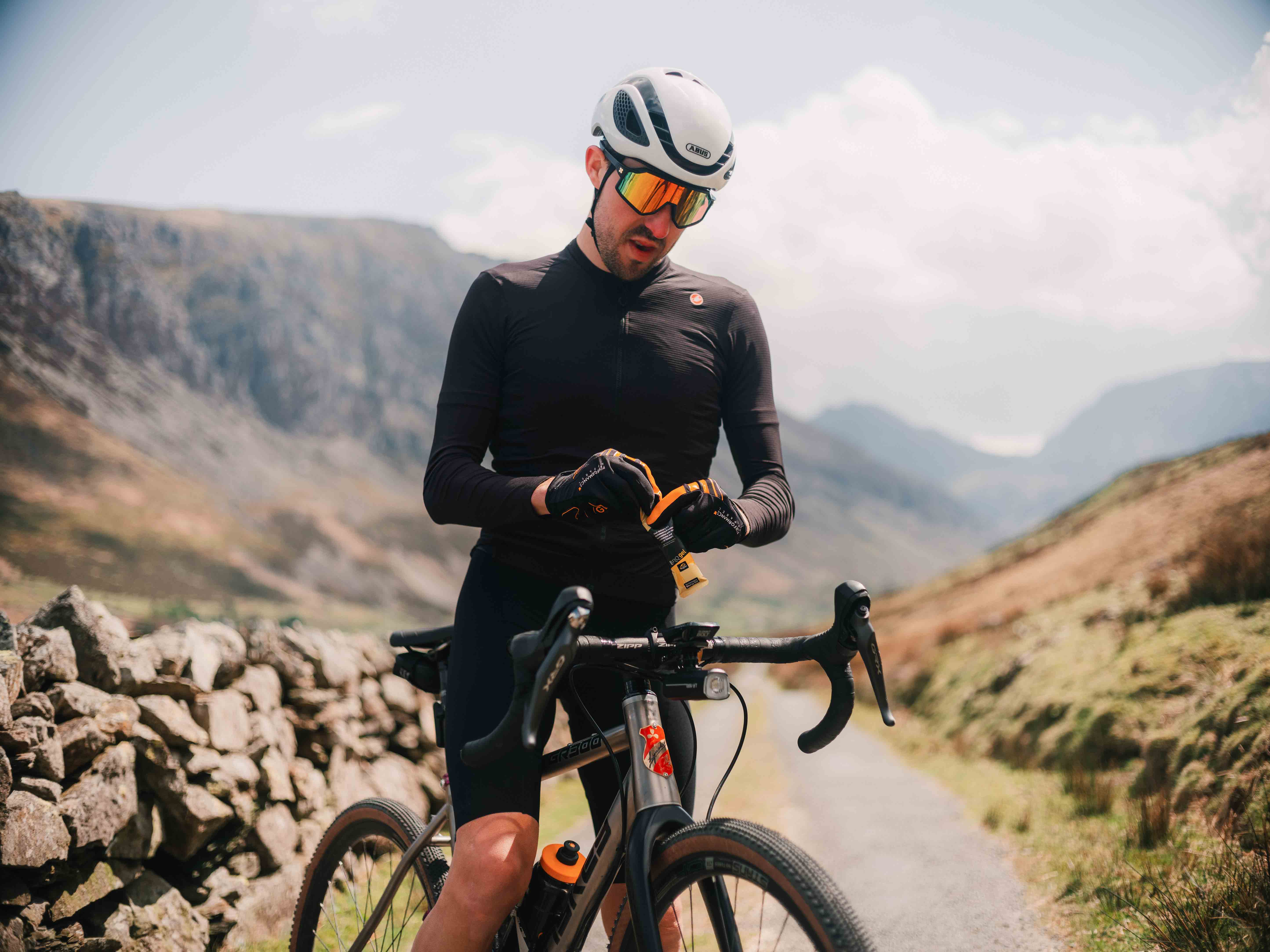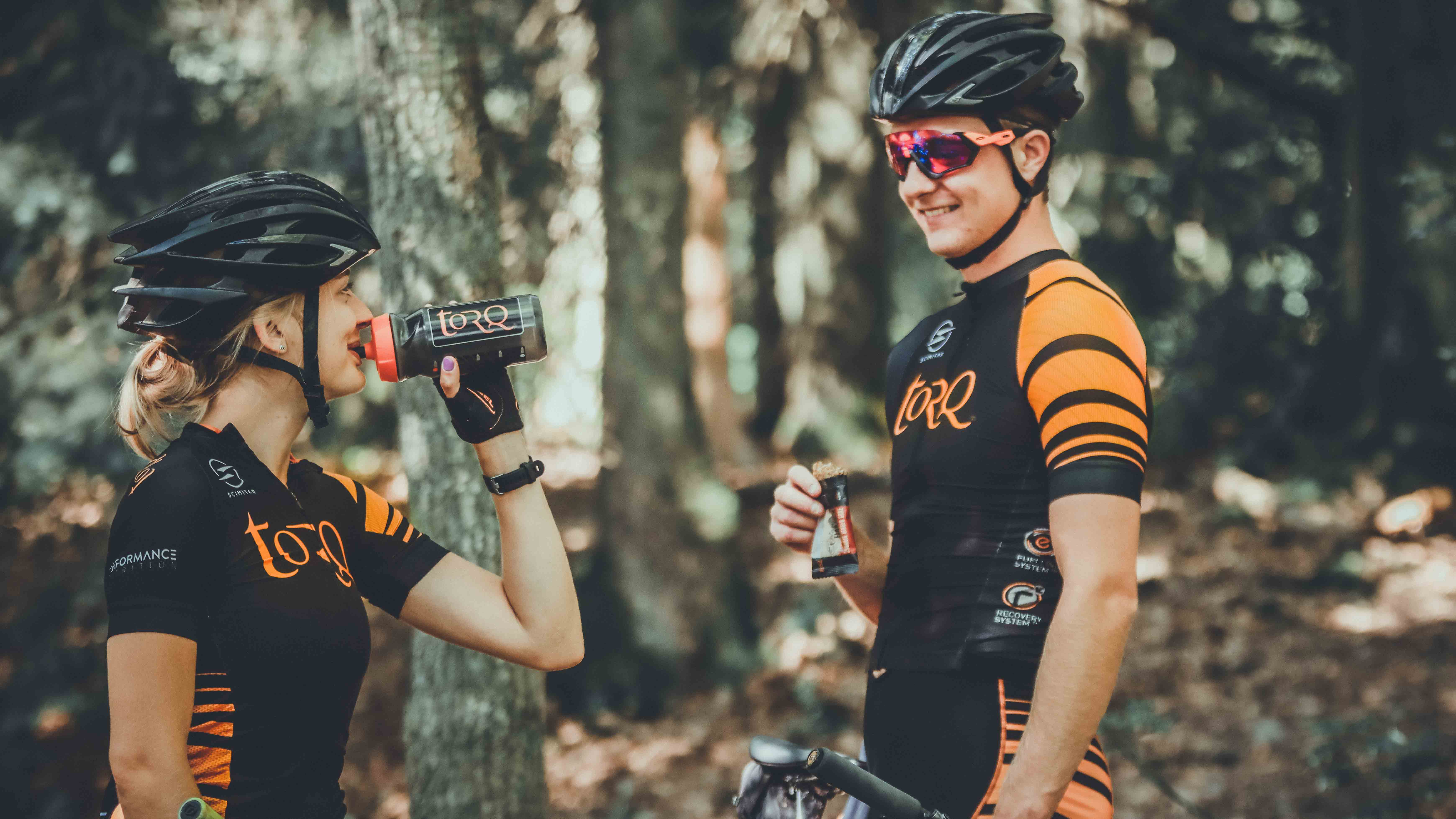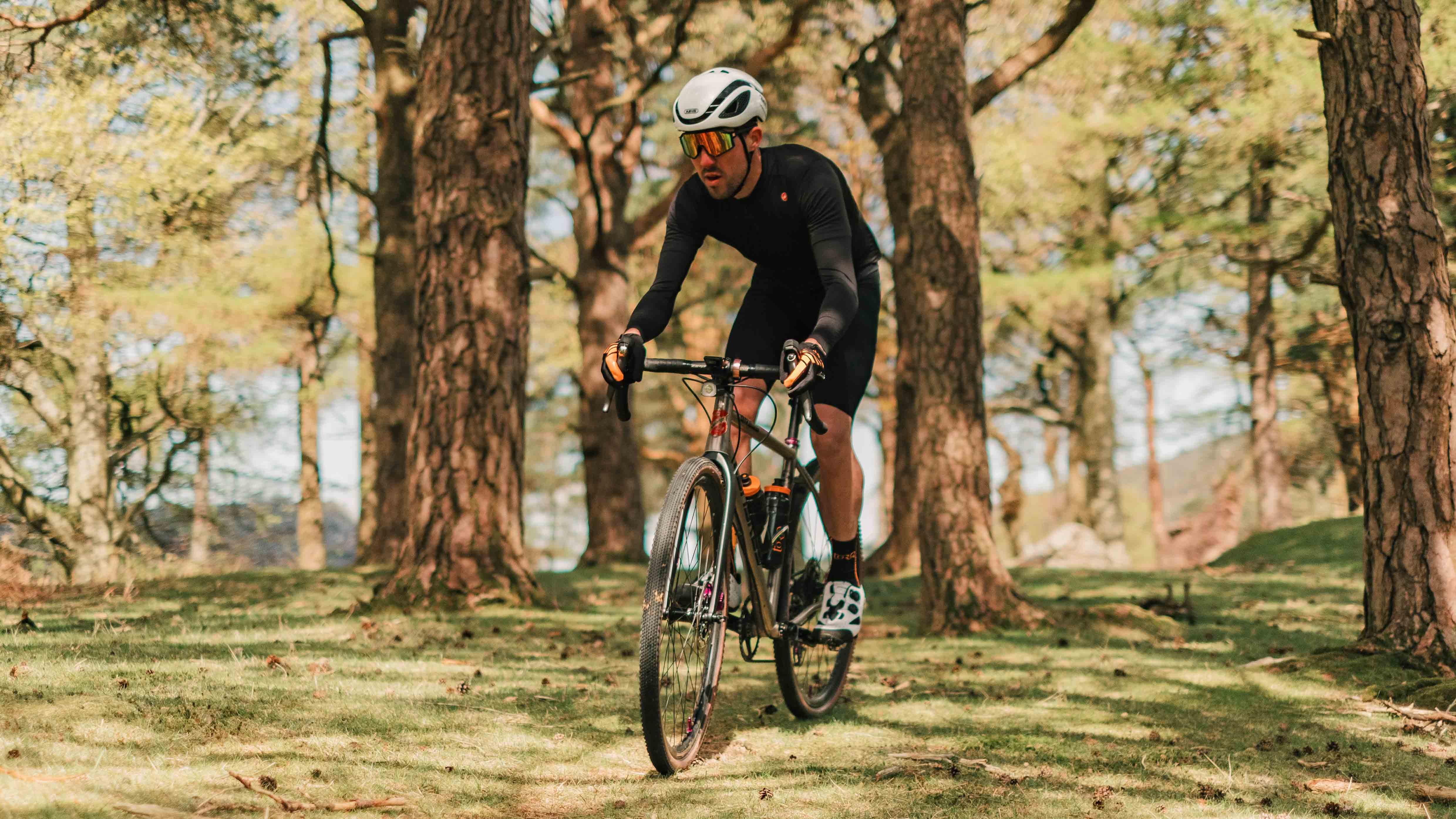In the second instalment of a new series on Gravel Union about the importance of appropriate nutrition for gravel riders, Matt Hart, founder and managing director of TORQ, discusses the topic of nutrition. While you could fuel your gravel rides, events and races on sausage rolls and Haribo, the outcome might not be ‘quite’ as good as if you fuel properly. Matt offers his insight and advice into appropriate fuelling for every type of gravel rider.

Training for a major cycling event requires a level of dedication and strategy that transcends simply riding long distances or increasing power output. One of the most critical and often underestimated aspects of preparation is nutrition. Much like a well-oiled machine, your body performs at its best when given the right fuel at the right time. This article presents a comprehensive, structured, and science-based approach to nutrition for gravel riders, to help you achieve optimal performance in your next big event or challenge.
Why Nutrition Matters in Cycling
Cycling, especially over long distances or high intensities, is physiologically demanding. Your body draws primarily on carbohydrates as its preferred source of energy during these efforts. However, your glycogen stores (carbohydrate stored in muscles and the liver) are limited. Without a solid fuelling strategy, you risk depleting these stores too early, resulting in the dreaded "bonk" or a dramatic drop in energy and power output.
Nutrition isn't only about race or event day - it supports every phase of your training cycle: from preparation, to peak training weeks, to event execution and recovery. Let's break this down systematically.

Building a Strong Foundation
During your training blocks, aim to maintain a diet that includes an ample supply of complex carbohydrates (e.g., whole grains, fruit, vegetables). These act as the primary energy source and must be replenished daily. Training depletes glycogen stores and if they aren’t regularly topped up, each session will feel harder and your performance will suffer.
Cyclists training regularly should aim for 6-10g of carbohydrate per kilogram of body weight per day. The closer you are to a key training week or ride, the more you’ll want to be at the higher end of this range. This is coined by the Sports Science community as “Fuel for the work required” meaning that the more endurance exercise you do, the more carbohydrate you need to consume.
Protein for Recovery and Muscle Maintenance
Protein isn’t just for strength athletes - it plays a vital role in endurance performance too. Cycling causes muscle damage, especially during long rides, high-intensity intervals, or climbing sessions. Consuming 20-25g of protein every 3-4 hours throughout the day helps support muscle repair and adaptation. Ideal protein sources include eggs, lean meat, dairy, legumes, tofu, or a quality recovery drink post-ride.
Micronutrients and Immune Support
Heavy training can impair immune function. A colourful, plant-rich diet is your first line of defence. Prioritise a high intake of fruits, vegetables, nuts, and seeds to deliver antioxidants and micronutrients. In particularly heavy training periods, targeted immune support supplements (e.g., vitamin C, D, or zinc) can be considered, but they shouldn’t replace a nutrient-dense diet.

When and What to Eat During Rides
If a session is longer than 90 minutes, begins fasted, or includes intervals, you should consume 30 - 90g of carbohydrate per hour, depending on intensity, duration and formulation of the fuel you’re consuming. Unless you’re using a dedicated science-based performance nutrition brand, don’t exceed 40-50g carbohydrate per hour.
Gravel riding allows for relatively easy consumption of on-bike fuel - use this to your advantage. Carbohydrate taken in during rides improves performance, preserves muscle glycogen and reduces post-ride fatigue. Examples of ride fuel include:
- Energy gels
- Energy bars
- Energy jellies/chews
- Energy drinks
- Dried fruit
- Low fat, high carbohydrate snacks
Hydration is equally critical. A dehydrated body cannot absorb nutrients effectively and even a 2% drop in body weight from fluid loss can impair performance. Aim to drink 400–800ml per hour, adjusting for temperature, sweat rate and duration.
If you really want to understand the value of on-bike fuelling, you really couldn’t watch a more informative video than this to explain the significant benefits you can enjoy:
Recovery Nutrition: The 30-Minute Rule
The first 30 minutes after finishing a ride is the golden window for recovery. During this time, your body is primed to absorb carbohydrates and protein, replenishing glycogen and repairing muscle tissue. Aim to consume:
- 1 - 1.2g of carbohydrate per kg of body weight
- 20 - 30g of protein
This should ideally take the form of a Recovery Drink optimised to do the job properly. Recovery drinks dedicated to endurance athletes typically contain a 3:1 blend of carbohydrate to protein. Opt ideally for whey protein, or pea protein if you’re plant-based. If you don’t have a recovery drink to hand, find a whole-food snack like a turkey sandwich with some fruit to follow. Failing to refuel in this window can extend recovery time and leave you flat on your next ride.
Taper Week Nutrition: Preparing the Body for an Event
If you’ve got an event you’re aiming for, in the final 5 - 7 days prior, your training volume should reduce. This tapering period is about maintaining fitness while allowing your body to fully recover. It’s also when you build your glycogen stores to capacity.
- During the taper week, increase your carbohydrate intake gradually - aim for the upper range of 8 - 10g/kg/day.
- Continue hydrating well. Glycogen is stored with water, so staying hydrated helps increase muscle glycogen.
- Avoid large fatty meals or unfamiliar foods that may cause digestive issues.
- Your body is a reservoir - you're filling it with fuel for the day when you’ll be drawing constantly on that supply.
Event Day Nutrition: A Plan for Success
Success on the day of your big event hinges on a well-rehearsed nutrition strategy. You wouldn’t ride a new bike on on race day, so don’t try new food either. Everything—from breakfast to mid-ride snacks—should have been tested during training.
1. Pre-Ride Breakfast (3–4 Hours Before Start): Consume a high-carbohydrate, low-fat, moderate-protein meal that is familiar and easy to digest. This meal should provide around 100g of carbohydrate and 20-25g protein, with minimal fat. It’s often hard to find the protein content without the fat, but try these:
Include a moderate amount of caffeine (if you’re habituated to it), and hydrate well - ideally 500–600ml of fluid.
2. Final Hour Pre-Ride: Top up your glycogen stores with a small complex carbohydrate snack - such as an energy bar or banana - this primes your system for immediate energy availability and keeps blood sugar stable. Don’t consume anything high GI (glycaemic index) like an energy gel or energy drink at this stage or it may leave you feeling sleepy on the start line – these products are ideal during exercise, but not beforehand.
3. During the Ride: You should have practiced consuming carbohydrate whilst you ride by now, so should have an idea of how much to consume per hour. Here’s a summary:
- 30g carbs per hour – better than nothing, but you’re not going to set the world on fire.
- 60g carbs per hour – a good level of fuelling – you’ll be consuming more than most people.
- 90g carbs per hour – a superior level of fuelling, but you must be using specialist performance products or you won’t be able to absorb and use the carbohydrate. Do your research.
- 120g carbs per hour – the pros are training their digestive systems to tolerate these exceptionally high carbohydrate intakes. If you want to be at the cutting edge, again, do your research, use the right products and practice in training.
If you’re taking 60g carbs on board per hour, you’re doing really well, so don’t feel pressured into consuming more. Practice our fuelling strategy regardless in training to avoid gastrointestinal issues.
Hydration should remain consistent—aim for 500–750ml per hour, adjusting for weather conditions. Include electrolytes to replace sodium lost through sweat.
This video shows how you can combine energy drinks, gels, bars and jellies/chews to maintain optimal fuelling and hydration:
4. Post-Event Recovery: Once the event is complete, the same 30-minute rule applies. Especially if you’ll be racing multiple stages or recovering for a future event, post-ride nutrition is key. Combine fast-digesting carbs with a quality protein source to aid muscle recovery, reduce DOMS (delayed onset muscle soreness) and begin restoring glycogen.

Common Pitfalls and How to Avoid Them
Even experienced cyclists make avoidable errors that undermine performance. Here’s what to watch out for:
- Going fasted or under-fuelled in training: This may think this teaches your body to conserve fuel, but it will actually cause you to burn your hard-earned muscle, limit adaptation and stifle recovery.
- Skipping recovery nutrition: This delays muscular repair and glycogen replenishment.
- Trying new foods on race day: This leads to digestive distress.
- Over-relying on caffeine or stimulants: This causes energy crashes and disrupts hydration.
- Ignoring fluid needs in cool weather: Dehydration happens even when you’re not sweating profusely.
Bringing It All Together
Cyclists often focus on watts, cadence, and training zones, but your nutritional framework is the invisible structure that determines how well you can access your potential. Think of it as your foundation: invisible when it’s working well, but catastrophically noticeable when it crumbles.
Your Pre-Event Strategy
- Carbo-load sensibly in taper week
- Stay hydrated
- Sleep well and reduce stress
Event Day Execution
- Eat a practiced breakfast 3 - 4 hours prior
- Consume carbs regularly during the ride
- Drink regularly and include electrolytes
- Refuel immediately post-ride
Long-Term Success
- Build nutritional habits during training
- Embrace recovery as part of training, not an afterthought
- View food as fuel, not reward or punishment

Final Words of Wisdom
Fuelling well isn’t about gimmicks or fad diets, it’s about respect for your body, your preparation, and the challenge ahead. As a Gravel Biker, you’re already on the right path (or should we say trail), so let your nutrition take you to places you’ve never been before!
If you would like to learn more about fuelling your gravel riding, take a look at the TORQ Fuelling System on the TORQ website.